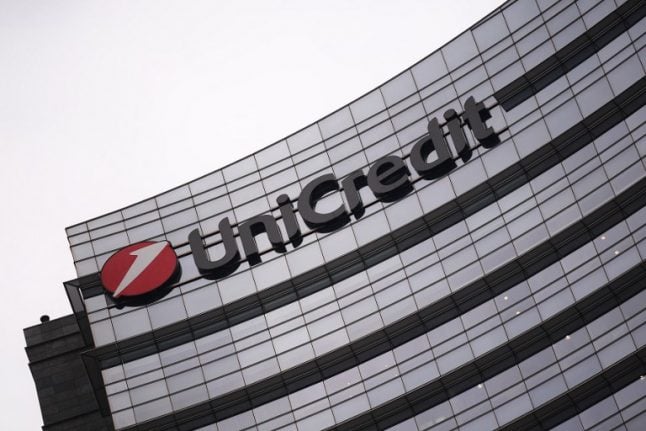UniCredit said in a statement that it chalked up net profit of €5.47 billion last year, exceeding analysts' forecasts.
The year before, one-off items and writedowns had pushed the lender into a net loss of €11.79 billion.
- READ ALSO: UniCredit to shed 18,200 jobs by 2018
UniCredit said 2017 full-year revenues edged 1.7 percent higher to €19.6 billion. In the fourth quarter alone, net profit amounted to €801 million, compared with a loss of €13.55 billion a year earlier.
“It was the bank's best fourth quarter in a decade,” said chief executive Jean Pierre Mustier. “2017 was a pivotal year for UniCredit.”
The numbers seemed to convince investors, too, with UniCredit shares bounding up 2.7 percent to €17.95, taking it 45 percent higher than a year ago.
UniCredit said its core tier-one capital ratio – a key measure of a bank's underlying strength – stood at 13.6 percent at the end of last year, only slightly below the very solid 13.8 percent seen in September.
The bank said its asset quality had improved with its net exposure to risk or non-performing debt down by 15.2 percent to €21.2 billion.
UniCredit was one of the worst-performing banks in stress tests conducted by the European Banking Authority in 2016. And since he took over as CEO in July of that year, Mustier has embarked on a massive shake-up.
This has included a €13-billion capital increase, the disposal of a number of assets such as Bank Pekao and Pioneer, and a €17.7-billion gross reduction in non-performing loans.
The bank also plans to slash 14,000 full-time equivalent jobs, of which 9,000 have been achieved so far. Since the end of 2015, UniCredit has closed 682 branches or 72 percent of the 944 planned by 2019.
UniCredit is pencilling in net profit of between €3.7 billion and €4.7 billion in 2018 and €4.7 billion in 2019, when the core tier-one ratio is projected to come out at 12.5 percent.



 Please whitelist us to continue reading.
Please whitelist us to continue reading.